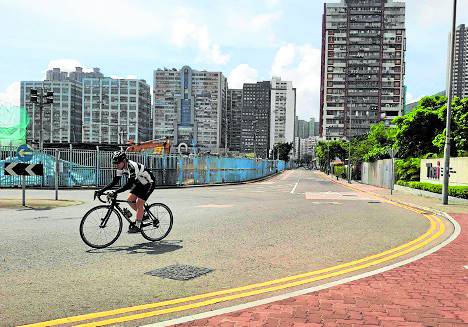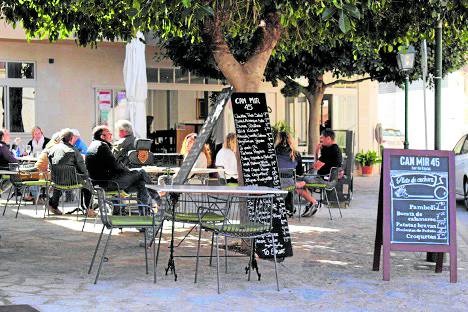
And just like that, we enter 2022. Two years into the pandemic and it seems we keep going back to square one just when things start to look better. But 2021 did have its bright spots—the roll out of the vaccination, which is a necessary first step to recovery.
We start the year with some musings on how we would like things to be, based on introspections about what has passed. In the end, we surmised that this is not so much a list of what can happen after the world has survived the pandemic, but rather a challenge to rethink what it would take to get us there.
Sustainable growth
Compounding growth has been the economic mantra of modern times and has been the ideal relentlessly pursued by businesses.
Growth is good especially for small enterprises (or developing countries). But growth for growth’s sake is a goal that is inherently unsustainable. While the decade prior to the pandemic saw the property sector booming to unprecedented levels, the tempering effect of COVID-19 revealed how much of the growth was fueled by debt and speculation rather than actual demand based on need.
There were costs to the spectacular growth: unaffordability of products, disproportionate allocation of uses to just a narrow market segment, accelerated encroachment of the metropolis into the natural environment, stress on resources, and vulnerability to crisis which results in the devaluation of assets.
Can the postpandemic normal be one that focuses on enabling our property industry to be sustainable instead?
Perhaps we could learn from economist Kate Raworth who said, “The twentieth century bequeathed to us economies that need to grow, whether or not they make us thrive, and we are now living through the social and ecological fallout of that inheritance. Twenty-first-century economists, especially those in today’s high-income countries, now face a challenge that their predecessors did not have to contemplate: to create economies that make us thrive, whether or not they grow.”
Car optionality
Limitations on mobility during the lockdowns brought to light the inadequacies of our land use and transport planning.
The necessity for alternative modes of transport (cycling, walking) became evident along with the need to provide the right kind of infrastructure to support these modes (protected bike lanes, car-free streets). These point to a mainstreaming of active mobility in cities globally and a shifting attitude towards infrastructure that should be prioritized.
Downtowns in Europe and the US are slowly adopting car-free cities, reclaiming streets from the automobile and turning them into places for people; making more compact, mixed-use environments that focus on accessibility by bringing destinations and activities close enough to walk or bike to.
Workplace transformation
Hybrid and flexible work environments are here to stay. Despite the economic downturn and unemployment induced by the pandemic, an increase in voluntary job resignations were observed throughout the world in the last two years.
Microsoft’s Work Trend Index reported that last year, over 40 percent of the global workforce were thinking about quitting their jobs. Their research also showed that employee expectations were changing, wanting the best of both worlds: over 70 percent of workers want flexible remote work options to continue, while over 65 percent are craving more in-person time with their teams.

This poses a challenge for employers who want to attract and retain top talent, for how offices are physically configured, and even how homes are to be designed. It also underscores the need to redefine our notion of productivity in this hybridized world.
Outdoors are In
Esteemed colleague Dr. Art Corpuz once said, “The best city is one where people prefer to stay outdoors.”
His quote, intended to idealize a city, turned out to be prescient and starkly relevant today. The dearth of open spaces in our metropolis and our addiction to hermetically sealed, climate-controlled indoor environments proved inapt during times of health crisis.
Reviving the economy required businesses to allow for outdoor settings. Rather than a temporary fix, perhaps balancing outdoors with indoors can be a permanent approach in making our built environment more resilient to shocks and a way to enable our cities to thrive even while under the threat of COVID and climate change.
Millennial homebuyers
Millennials, who were the first to grow up in the era of the internet, are now starting their own families and buying homes. Many of the Gen Z are in their 20s and entering the workforce.
Together, these segments constitute about 70 percent of the Philippine population. And yet many in this generation are postponing marriage or having children. Attitudes, expectations and lifestyle preferences of this tech-savvy demographic cohort are unique to them. Growing up in an age of abundance and reaching adulthood in a time of scarcity created some challenges for this generation. Their view on home and work life will determine how cities and society will be shaped in the coming decades.

Personally, I feel hopeful. This can be the generation that fixes the errors of prior ones.
Nature-positive developments
2021 ended on a tragic note for the Philippines due to the devastation brought about by Typhoon Odette (Rai) which reminded us again of the reality of climate change and of the fragility of our cities and coastal areas.
We are dangerously close to the 1.5-degree tipping point of global warming. The fact that buildings are responsible for 40 percent of annual carbon emissions shows where significant change must happen.
On the bright side, the UN estimates that 40 percent of the material urbanization of 2050 still needs to be built. This presents a tremendous opportunity to build a new generation of low-carbon buildings while updating existing building stock for better performance.
Not business-as-usual
Over the past two years, we witnessed the profound effects of COVID-19, climate change, and our choice of government leaders. We now face 2022 with the duality of anxiety and optimism.
We also face the opportunity to change things. It would be a terrible waste of crisis if we limit our aspirations to simply going back to the way things were.
The author is the founder and principal of JLPD, a master planning, and design consultancy practice
If you like this article, share it on social media by clicking any of the icons below.
Or in case you haven’t subscribed yet to our newsletter, please click SUBSCRIBE so you won’t miss the daily real estate news updates delivered right to your Inbox.
The article was originally published in Inquirer.net and written by Ar. Joel Luna.







More Stories
Vista Land Celebrates 50 Years with Sandiwa: An Event Honoring Leadership, Legacy, and the Filipino Dream of Homeownership
Vista Land Celebrates Love Month in Ilocos Region
Vista Land Bridges Cebuano Heritage and Progress with Valencia by Vista Estates